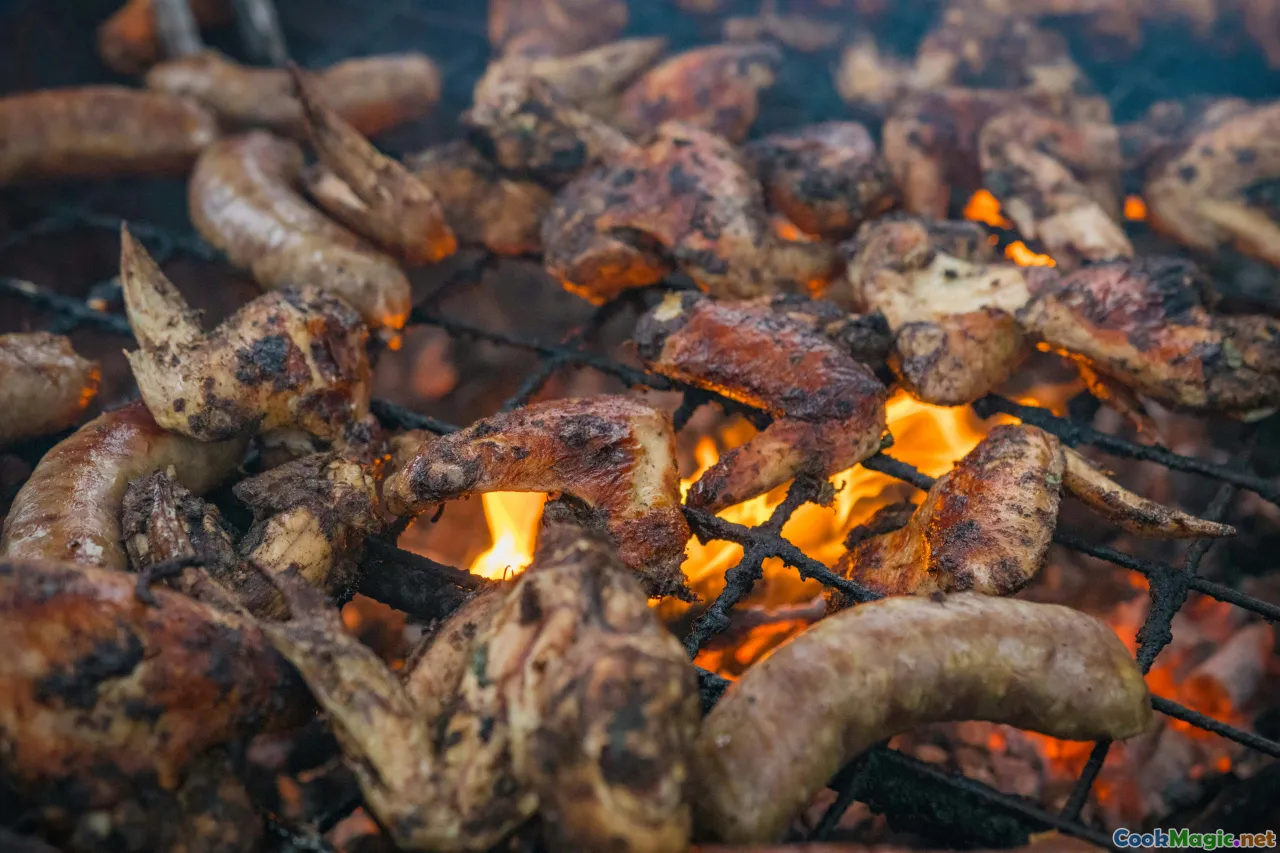Traditional Ethiopian Meals
12 min read Explore authentic Ethiopian meals, highlighting cultural significance, unique ingredients, and traditional eating practices that define this rich culinary heritage. September 25, 2025 21:05
A Culinary Journey into Traditional Ethiopian Meals
Stepping into Ethiopia’s vibrant culinary landscape is akin to embarking on a time-honored voyage through history, culture, and emotion. From aromatic spices wafting through bustling markets to the communal joy around shared platters, Ethiopian cuisine embodies the essence of hospitality and rhythm. The tapestry is woven with earthy, spicy, and tangy flavors that dance on the palate, all served with the hospitality of a people proud of their deep-rooted food traditions.
For those eager to explore what makes Ethiopian food distinctive, envision injera—a spongy, sourdough pancake made from teff—serving as both a plate and a utensil, topped with a colorful mosaic of stews and vegetable dishes. Each bite offers a multi-layered experience: a blend of textures, a symphony of flavors, and a glimpse into a rich cultural heritage rooted in centuries of tradition.
In this exploration, we will navigate through the quintessential dishes, uncover regional variations, share personal stories, and provide insights into the rituals and customs that make Ethiopian food a profound expression of community and identity.
The Heart of Ethiopian Cuisine: Injera and Wat

Ethiopian cuisine is inseparably linked to injera, a large, spongy sourdough flatbread made primarily from teff, a tiny, nutrient-dense grain native to Ethiopia. Its signature tanginess originates from the natural fermentation process, which can take several days and involves a deep, fragrant sour smell that hints at its robust flavor.
Injera serves dual roles—delicately absorbing flavorful sauces and stews, and acting as a edible plate. Its porous surface is perfect for holding dollops of spicy wet stewscalled wats, which are piled generously on top. The vibrancy of these dishes—rich reds fromDoro Wat, lively greens from atkilt, or bright yellows from berbere-infusedlentils—creates a visual feast that invites both the eyes and the palate.Personal insight: I recall my first encounter with injera back in Addis Ababa, where the sour aroma enveloped the air. The first bite was surprising—tangy and soft, yet resilient, with an earthy depth that hints at centuries of tradition.
Signature Dishes and Their Stories
Doro Wat: The Spicy Meltdown

Doro Wat is Ethiopia’s crown jewel—a rich, fiery chicken stew simmered slowly with a blend of berbere spice, garlic, ginger, and niter kibbeh (Ethiopian spiced butter). The aroma is intoxicating, filling the air with smoky, peppery hints and fragrant herbs. The chicken parts become tender and fall off the bone, soaking in the spiced tomato sauce, often topped with hard-boiled eggs that soak up the flavors like little flavor sponges.
Eating Doro Wat is a sensory ritual—draped in injera, its heat warms from the inside out while the intricate spices evoke comfort and complexity. Pairing it with a traditionaltej, honey wine, elevates the experience further.Cultural note: Doro Wat is traditionally served during special celebrations such as Ethiopian Christmas or Wudday, symbolizing warmth, togetherness, and zest for life.
Kik Alicha: The Mild Comfort Food

In contrast to the fiery Doro Wat, Kik Alicha offers a milder, soothing flavor profile. Made from split yellow peas or lentils simmered in turmeric-infused broth, it becomes buttery and golden, infused with subtle spices that bring out the earthy sweetness of the legumes.
This dish is often a staple in vegetarian or fasting meals but stands equally on its own due to its delicate flavor. Served with injera, Kik Alicha balances the palate, providing relief from spice heat and celebrating simplicity.
Tip: Far too often, Kik Alicha gets overshadowed by its spicy cousin, but I believe it holds a quiet nobility that captures Ethiopian culinary restraint.
Tibs: A Sizzling Skill

Tibs refers to sautéed or stir-fried meat—beef, lamb, or goat—cooked with onions, peppers, tomatoes, and a dash of spices. Often prepared on a tava or skillet, the sizzling plate emits a mouthwatering aroma of spiced, charred meat, complemented by the smoky scent of grilled vegetables.
Tibs exemplify Ethiopian conviviality—you’ll often find friends sharing a platter around a communal skillet, passing around pieces of injera, and dipping into bowls of spicy condiments. The textures are tender, with a crispy edge from caramelized edges and grilled bits, providing a delightful contrast.
Story: I once attended a bustling tavern in Awassa, where the chef expertly flipped tibs on an open flame, filling the air with the heady aroma of roasting meat. It was a celebration of skill, passion, and tradition.
The Role of Tradition, Ritual, and Community

Ethiopian meals are more than sustenance—they are vital social rituals. The act of sharing injera and stews around a large plate fosters unity, dialogue, and a sense of belonging. The traditional GenaorMeskal—a handwoven basket—serves as the centerpiece, often accompanied by coffee ceremonies amid aromatic brewing and storytelling.
Family and community gatherings frequently revolve around food. During Gena(Ethiopian Christmas) orEnkutatash(New Year), elaborate meals are prepared, often involving extended family and neighbors, fostering bonds that transcend mere eating.Personal reflection: I remember a humble village gathering where elders explained their food preparations—each spice, each technique steeped in history, reminding me that Ethiopian cuisine is a living inheritance.
Regional Variations: From Highlands to Lowlands

Ethiopia’s diverse topography and ethnic groups contribute to regional variations that enrich its culinary tapestry. In the highlands, dishes tend to be hearty, utilizing staple ingredients like injera and teff, with flavors influenced by indigenous herbs and spices.
In contrast, lowland and border regions like Somali and Afar communities favor dishes with more meat, goat, camel, and fish, often seasoned with indigenous herbs and spicy condiments unique to their areas.
For example, the Berberespice mixture varies—more pungent in the east, more aromatic in the south. TheNyangaorKitabread of the Somali Ethiopians showcases different grains and fermentation techniques, demonstrating Ethiopia's broad culinary diversity.Insight: Traveling across Ethiopia reveals that each region is a culinary chapter, wrote with ingredients available locally and cultural influences that shape each flavor profile.
Ethiopian Beverage Traditions that Complement the Meal

No Ethiopian meal is complete without its iconic coffee ceremony—a ritual of roasting, grinding, and brewing coffee beans over an open flame, releasing intoxicating aromas that fill the air. Served in small cups, the coffee's dark, earthy flavor is complemented by spicy, floral, or citrusy notes, depending on the beans.
Ethiopian honey wine, tej, offers a sweet yet spicy complement to the meal, often infused with Eusede or traditional herbs. For those who prefer non-alcoholic options, traditional herbal infusions like khatleaves orbesobela (rue) teas add layers of aromatic complexity.
Final Reflections: Why Ethiopian Food Touches the Soul
Ethiopian cuisine isn’t just about taste—it’s a sensory journey into a land where food and community are intertwined. Every dish reflects centuries of history, resilience, and reverence for nature. The communal act of sharing injera and stews becomes a symbol of Ethiopian hospitality; a moment of connection, celebration, and continuity.
Traveling through Ethiopia’s markets, homes, and eateries can evoke a deep appreciation that transcends flavor profiles—an understanding that food, in Ethiopia, is woven into the fabric of life itself. It nurtures the body and soul, forging bonds and telling stories that echo through generations.
Let this vivid tapestry inspire your culinary exploration and perhaps, one day, lead you to savor the authentic, heartfelt flavors of Ethiopia firsthand—where every meal is a celebration of life itself.









